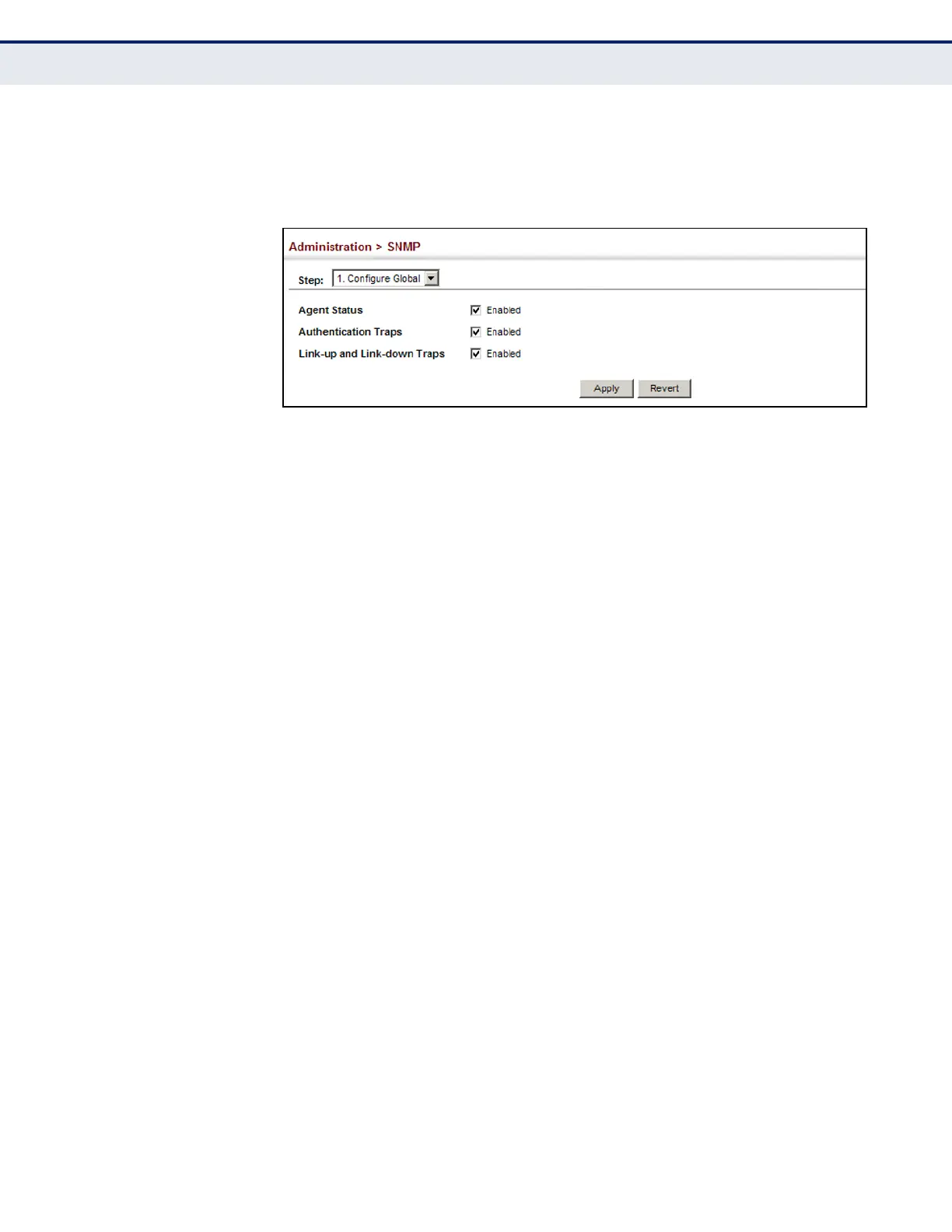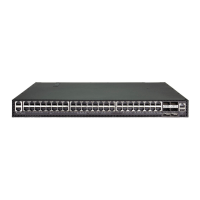C
HAPTER
14
| Basic Administration Protocols
Simple Network Management Protocol
– 447 –
3. Enable SNMP and the required trap types.
4. Click Apply
Figure 244: Configuring Global Settings for SNMP
SETTING THE
LOCAL ENGINE ID
Use the Administration > SNMP (Configure Engine - Set Engine ID) page to
change the local engine ID. An SNMPv3 engine is an independent SNMP
agent that resides on the switch. This engine protects against message
replay, delay, and redirection. The engine ID is also used in combination
with user passwords to generate the security keys for authenticating and
encrypting SNMPv3 packets.
CLI REFERENCES
◆ "snmp-server engine-id" on page 780
COMMAND USAGE
◆ A local engine ID is automatically generated that is unique to the
switch. This is referred to as the default engine ID. If the local engine
ID is deleted or changed, all SNMP users will be cleared. You will need
to reconfigure all existing users.
PARAMETERS
These parameters are displayed:
◆ Engine ID – A new engine ID can be specified by entering 9 to 64
hexadecimal characters (5 to 32 octets in hexadecimal format). If an
odd number of characters are specified, a trailing zero is added to the
value to fill in the last octet. For example, the value “123456789” is
equivalent to “1234567890”.
◆ Engine Boots – The number of times that the engine has
(re-)initialized since the SNMP EngineID was last configured.
WEB INTERFACE
To configure the local SNMP engine ID:
1. Click Administration, SNMP.
2. Select Configure Engine from the Step list.

